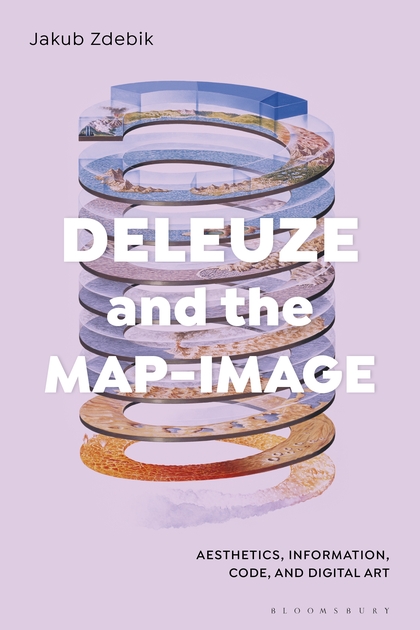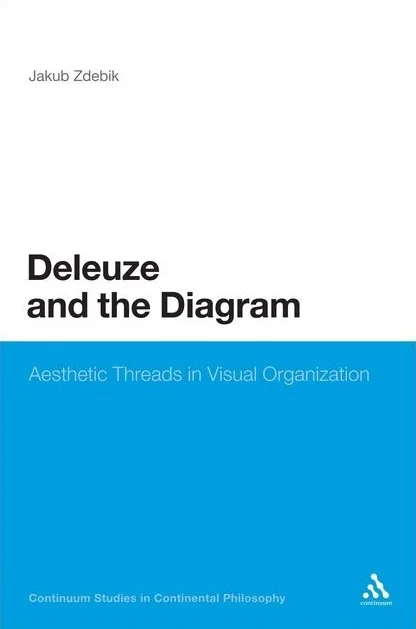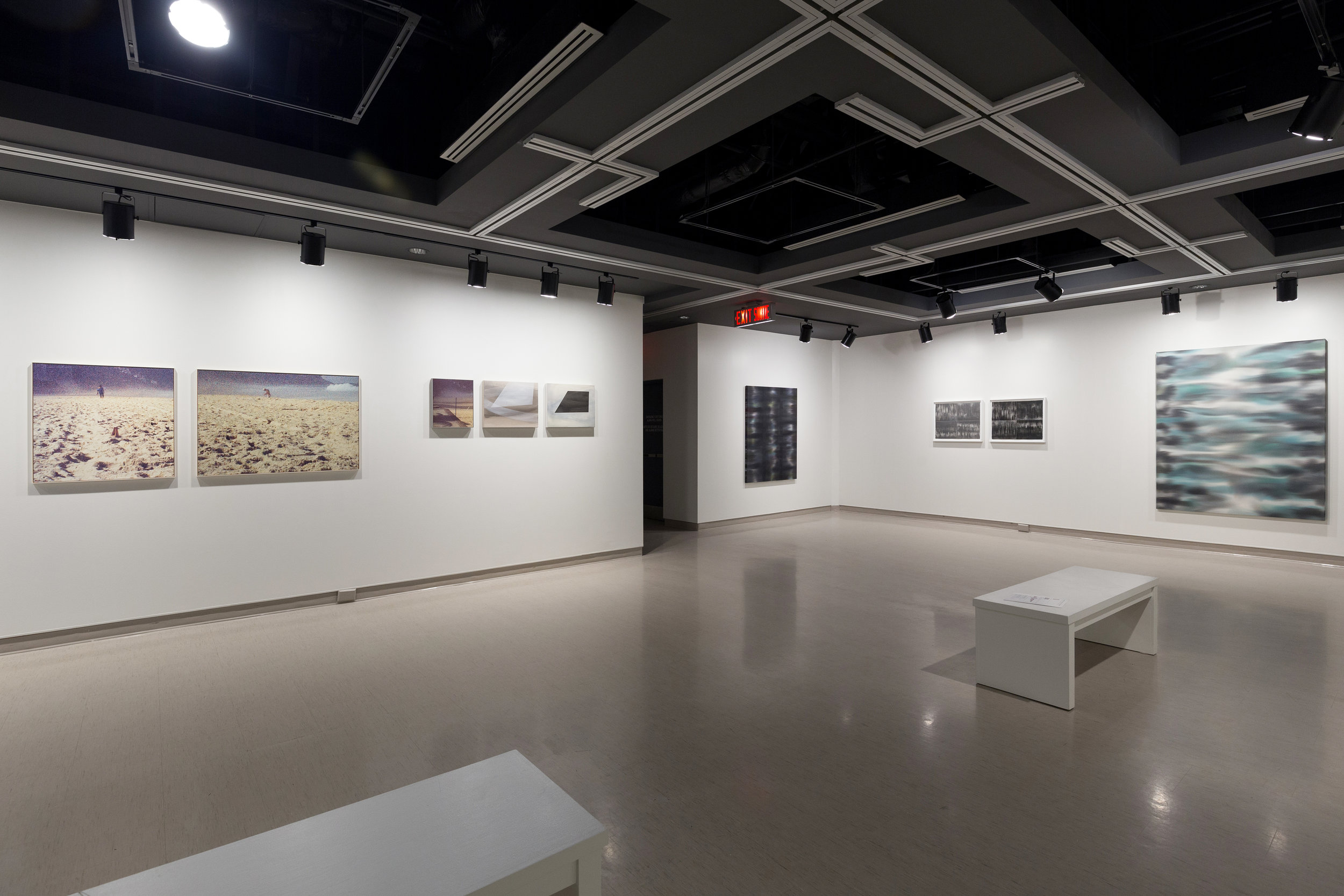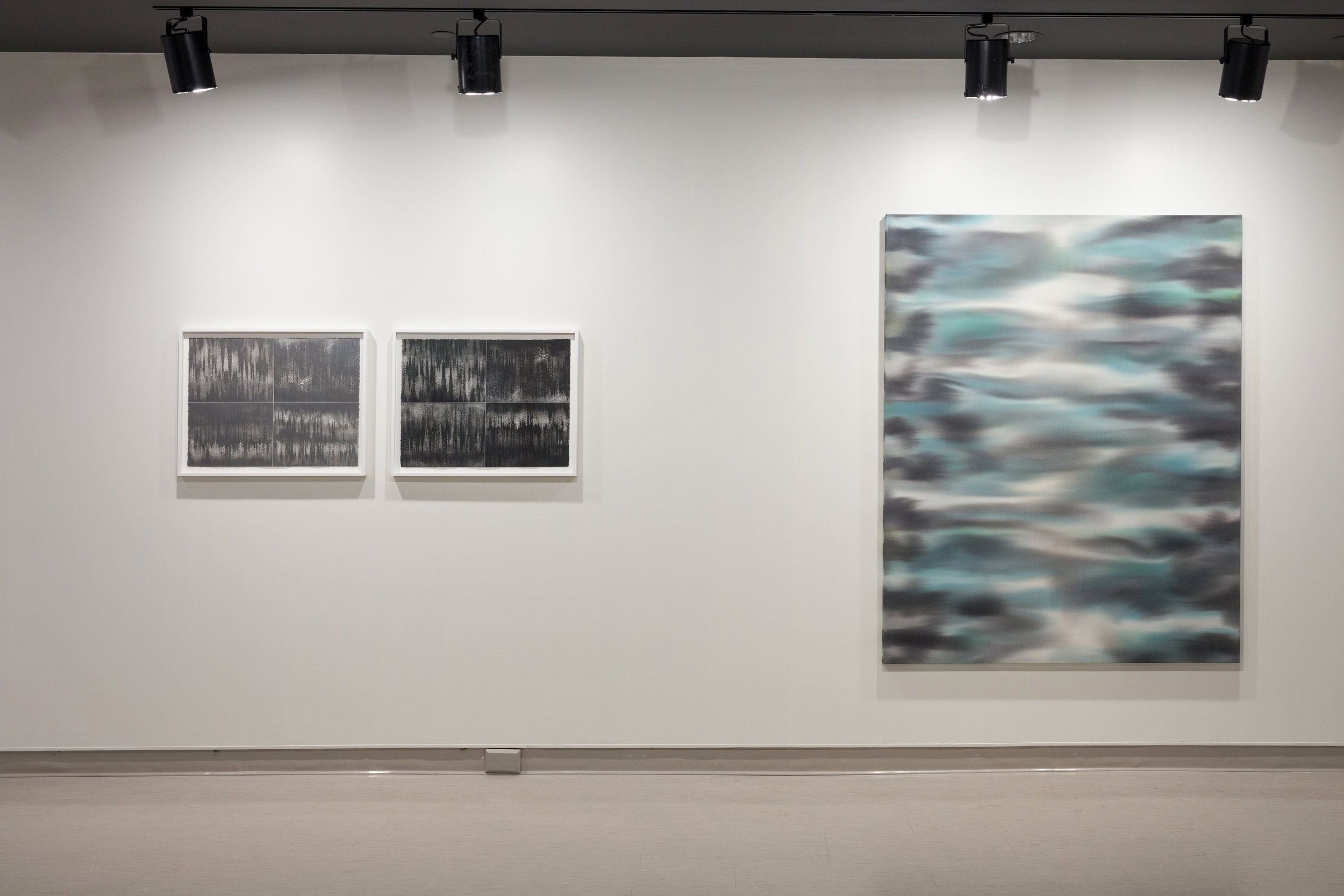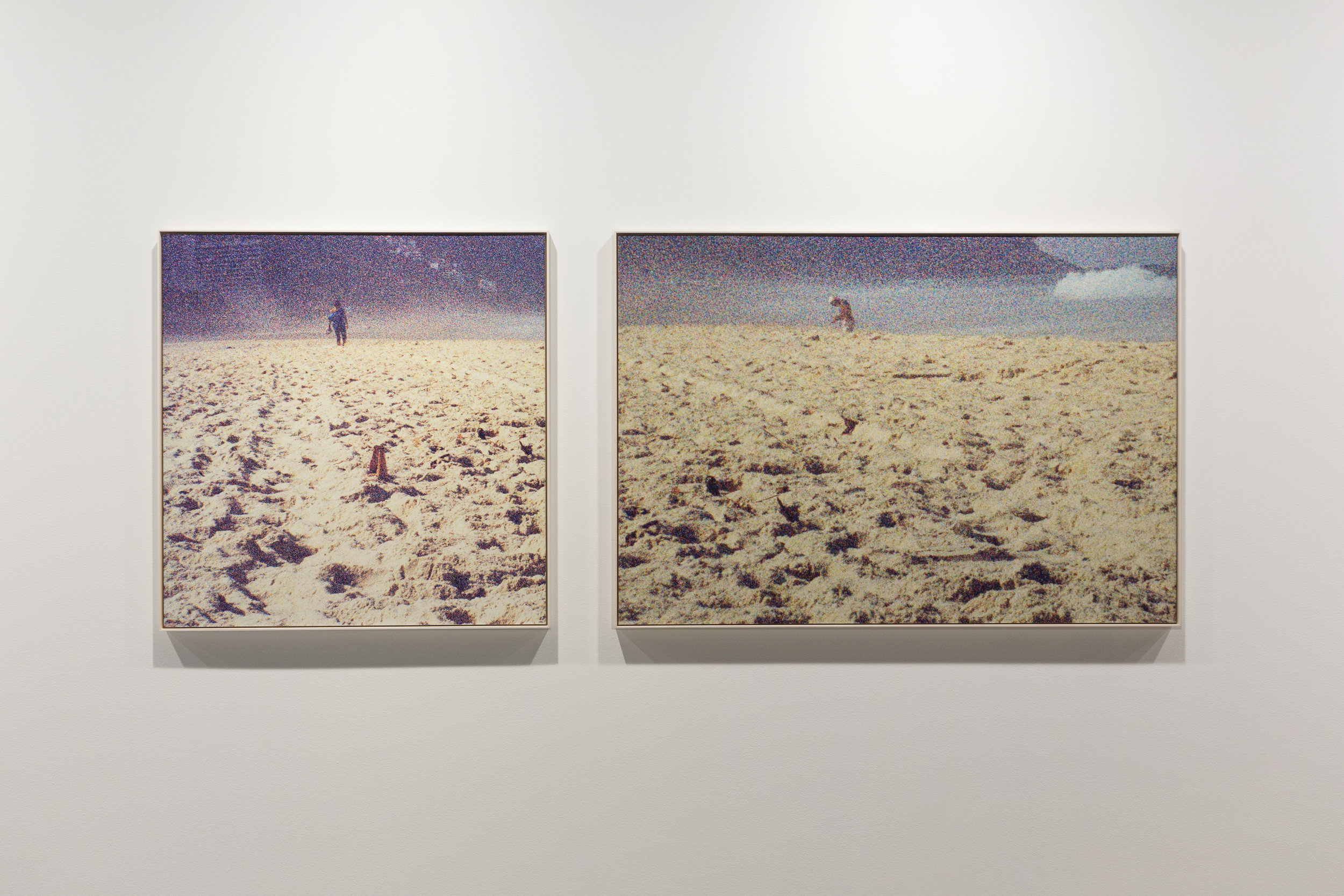
JAKUB ZDEBIK
Jakub Zdebik holds a Ph.D. and M.A. from Western University in Theory and Criticism, and a B.A. (Hons.) from McGill University in English Literature with a minor in Art History.
Dr. Zdebik’s art historical research is divided into three categories: (a) Aesthetic philosophy focusing on the visual theories of Gilles Deleuze, such as the map and the diagram; (b) Art historical research focusing on the relationship between art and information: digital art and artists, artistic strategies of data visualization and diagrammatic artistic practices; (c) Curated exhibition and curatorial research. His disciplinary breadth includes contemporary art history and aesthetics, conceptual visual arts, literature, philosophy, digital art, data visualization, new media, as well as cultural studies, and film studies. Zdebik’s research focuses on the critical theory of the image that he explores through the concept of the diagram, a contemporary aesthetic philosophical concept relating to the genesis of the image and the representation of thought in visual art, film and literature in the guise of charts, maps and plans across cultures.

PUBLICATIONS
DELEUZE AND THE MAP IMAGE, 2019
The map, as it appears in Gilles Deleuze's writings, is a concept guiding the exploration of new territories, no matter how abstract. With the advent of new media and digital technologies, contemporary artists have imagined a panoply of new spaces that put Deleuze's concept to the test. Deleuze's concept of the map bridges the gap between the analog and the digital, information and representation, virtual and actual, canvas and screen and is therefore best suited for the contemporary artistic landscape.
Deleuze and the Map-Image explores cartography from philosophical and aesthetic perspectives and argues that the concept of the map is a critical touchstone for contemporary multidisciplinary art. This book is an overview of Deleuze's cartographic thought read through the theories of Sloterdijk, Heidegger, and Virilio and the art criticism of Laura U. Marks, Carolyn L. Kane, and Alexander Galloway, shaping it into a critical tool through which to view the works of cutting edge artists such as Janice Kerbel and Hajra Waheed, who work with digital and analog art. After all, Deleuze did write that a map can be conceived as a work of art, and so herein art is critiqued through cartographic strategies.
DELEUZE AND THE DIAGRAM, 2012
Deleuze and the Diagram charts Deleuze's corpus according to aesthetic concepts such as the map, the sketch and the drawing to bring out a comprehensive concept of the diagram. In his interrogation of Deleuze's visual aesthetic theory, Jakub Zdebik focuses on artists that hold an important place in Deleuze's system. The art of Paul Klee and Francis Bacon is presented as the visual manifestation of Deleuze's philosophy and yields novel ways of assessing visual culture. Zdebik goes on to compare Deleuze's philosophy with the visual theories of Foucault, Lyotard and Simondon, as well as the aesthetic philosophy of Heidegger and Kant. He shows how the visual and aesthetic elements of the diagram shed new light on Deleuze's writings.
Deleuze conceptualized his theory as a form of painting, saying that, like art, it needed to shift from figuration to abstraction. This book focuses on the visual devices in Deleuze's work and uses the concept of the diagram to describe the relationship between philosophy and art and to formulate a way to think about philosophy through art.
FLAT DEATH JEST: JULIA MARTIN’S PERFORMATIST AESTHETICS OF EMPATHY [PDF], Esse : Arts + Opinions, Issue 95, 54-63 (2019)
Given the problems we face in the twenty-first century, the capacity to appreciate the feelings and emotions of others would appear to be a potential antidote to excessive individualism and the allure of withdrawing into one’s own identity. But can empathy really change the world? This issue examines empathy in the context of contemporary creation and seeks to determine whether art can contribute to building sensitive bridges between people that are geographically, socially, and culturally distant and whose experiences differ. - Esse Editors
DRAIN - DIAGRAM Vol. 15:1, 2018, EDITED AND LED BY JAKUB ZDEBIK
What is a diagram? How do maps, charts, plans, DNA sequencing, weather mapping, computer glitches and Internet cartography blur the boundaries between ‘art’ and ‘information’? This issue of Drain presents artworks, thought experiments, essays and reviews that explore how data has been weaved into artworks and in the other direction, artworks into data. How are surveillance, spying, data collection explored by artists? Does Google Earth problematize artists’ relationships with space and mapping? Is there an algorithmic aesthetics? What is at the source of the renewed artistic interest in Cybernetics? How do artistic practices appropriate information-age interfaces: first-person shooter or roving perspective; satellite pictures or overhead images, disposable data or the notion of a mathematical sublime? Can the diagram revamp the essence of the image, its relationship to the multiplicity, to mutating media platforms, to screen interface, to the virtual and actual of the image? How is it possible to reveal the image’s relationship to binary code and coding, scientific visualization, maps of the universe, data navigation, the algorithmic posthuman? Under the umbrella term of the diagrammatic, Drain seeks to question definitions of ‘art’ and ‘information’ by examining their creative interconnections.
FUTURE ARCHAEOLOGY: THE SPECULATIVE INDEXICALITY OF ADRIAN GÖLLNER’S CONCEPTUAL ARTEFACTS, RACAR: Revue d’Art Canadienne/Canadian Art Review, Volume 36, Issue 2, 67-78 (2017)
CELLULOID FILM AS DIGITAL ART: AESTHETICS OF TRANSLATION, INFORMATION AND INTERMEDIALITY IN THE WORKS OF CORY ARCANGEL,Semiotic Review, Volume 3 (2017)
DARK THOUGHTS: JINNY YU STARTS WHERE PAINTING ENDS, Esse: Arts + Opinions, Issue 76, 30-35 (2012)
NETWORKS OF CORRUPTION: THE AESTHETICS OF MARK LOMBARDI'S RELATIONAL DIAGRAMS, RACAR, Volume 36, Issue 2, 67-78 (2011)
STRATA AND SEDIMENT UNDER THE FOG: EWEN DELEUZE, SMITHSON AND KANT'S LANDSCAPES OF THOUGHT, The Brock Review, Volume 10, Issue 1, 5-18 (2011)
THE OTHER LANGUAGE: VISUAL SEMIOTICS AND MEANING (REVIEW ARTICLE OF FERNANDE SAINT-MARTIN), Semiotic Review of Books, Volume 20, Issue 2-3, 1-4 (2011)
THE AESTHETICS OF DESCENT: A DIAGRAM OF THE SKIN OF FRANCIS BACON'S FURIES. ESC: English Studies in Canada, Volume 34, Issue 1, 149-164 (2009)
A SHORT ATLAS OF JANICE KERBEL’S HOME CLIMATE GARDENS DRAWN ACCORDING TO TEMPERATE COORDINATES, The Brock Review, Volume 10, Issue 1, 41-48 (2008)
ALLAGMATIC, Semiotic Review of Books, Volume 17, Issue 2, 1-5 (2007)
THE ARCHIPELAGO AND THE DIAGRAM, Graduate Researcher: Journal for the Arts, Sciences, and Technology, Volume 17, Issue 2, 143-47 (2003)

RESEARCH CONFERENCES
When one thinks of diagrams, charts or plans one does not necessarily think of art; yet more and more artistic strategies rely on the interplay of art and data. This workshop asks: Is there an aesthetic theory of DNA sequencing, weather mapping, computer glitches, Internet cartography? How is surveillance, spying, data collection represented in art? Does Google Earth problematize art’s relationship to space and mapping? Is there an algorithmic aesthetics? How does art appropriate information-age interfaces: first-person shooter or roving perspective; satellite pictures or overhead image aesthetics; disposable data or a mathematical sublime? Can art capture the image’s relationship to binary code and coding, scientific visualization, maps of the universe, data navigation, the algorithmic posthuman? This workshop will discuss how information is treated aesthetically.
SPEAKERS
ADRIAN GÖLLNER (ARTIST)
In 2014 artist Adrian Göllner began a series of experiments in which he sought to capture and make permanent the essence of an explosion. In his first attempt, he dropped firecrackers into freshly pulled ceramic vases, which caused them to warp and distort in response to the sonic blast. By then igniting the firecrackers inside of balls of soft clay, he eventually succeeded in casting the shape of a small explosion itself. This methodology was then brought to the task of casting an explosion 1/1,000,000th the power of the first atomic bomb, Trinity (1945). However, re-enacting this historic moment, even if at a fractional scale, proved easier said than done and threatened to conjure the hubris of the original event.
Bio: Adrian Göllner is interested to heighten the viewer’s sense of self and their surroundings through transposing elements of sound, time and motion. In an art practice that employs a wide range of techniques and mediums, Göllner divides his time between creating small, conceptual works in the studio and implementing public art commissions at a much larger scale. While continuing to mount exhibitions at home and abroad, Göllner has had the good fortune to have received 20 public art commissions, including works the Vancouver 2010 Winter Olympic Games, the sixteen towers of CityPlace in Toronto, and the Canadian Embassy in Berlin.
Adrian Göllner received a BFA from Queen’s University in 1987 and an MFA at the University of Ottawa in 2016. While maintaining his art practice in Ottawa, he has continued to advocate for artists’ rights and has served on the boards of a number of local galleries.
ALEXE HOUTART (UQO)
Le gabarit : acte auctorial du graphiste dans le cadre d’une commande éditoriale
Alors que les interventions graphiques dans le cadre d’une commande classique sont plutôt du registre de l’invisible, on cherche ici, par le biais d’une réflexion sur la notion de gabarit, à mettre en lumière la contribution originale du graphiste. Cette communication présente le gabarit du catalogue de l’exposition Département des plantes de bureau (DPB), de l’artiste Montréalaise Catherine Lescarbeau, commissairée par Marie-Hélène Leblanc. Par sa recherche, Alexe Houtart montre que le gabarit est plus qu’un outil fonctionnel; il est un acte de création, la voix du graphiste.
Bio : Fondatrice de Houtart Design, professeure contractuelle à La Cité (Ottawa) et candidate à la maitrise en muséologie et pratiques des arts (ÉMI-UQO), Alexe Houtart se spécialise en graphisme éditorial. Ses recherches actuelles explorent les possibilités de signifier une exposition dans la mise en forme d’un catalogue. Conceptrice aux intérêts multidisciplinaires, elle cherche à travailler au croisement du graphisme, des arts visuels et du commissariat.
ANNE LEFEBVRE (Collège International de Philosophie/ENS Cachan)
Information et Image chez Simondon: pour une pensée renouvelée de la conception
CAROLYN KANE (RYERSON)
Anti-Communication as Fashionable Communications
In a world esteeming technological efficiency and control, glitches and errors are avoided at great cost. When such unintelligible artifacts do appear, they are quickly removed, banished from visual imagery and the domains of official, mediated experience. Granted precision and accuracy in audiovisual media are norms and ideals dating back millennia, there is nonetheless a growing need to understand the popularity of glitch styles; noisy artifacts that seem to say nothing and communicate even less.
Understanding glitch fashions, this paper argues, requires revisionist investigation of visual art and sound histories, conducted through the lens of glitch, noise, and error. Focusing on precursors in the twentieth century avant-garde, I identify proto-glitch strategies in the plastic arts, sound composition, and mechanical and electronic art. The presentation maps a visual and critical history of glitch aesthetics, showing its gradual implementation in the development of twenty-first century style.
Bio: Carolyn L. Kane is the author of Chromatic Algorithms: Synthetic Color, Computer Art, and Aesthetics after Code (University of Chicago Press, 2014), an award-winning book analyzing the role of electronic color in the development of media aesthetics 1960. After completing her Ph.D. at New York University and a Postdoc in aesthetics at Brown University (2015), she joined the Faculty of Communication and Design at Ryerson University in Toronto. Her forthcoming book, High-Tech Trash: Critical Aesthetics in the Innovation Age, analyzes artistic uses of glitch and failure in media art.
MARIE-HÉLÈNE LEBLANC (UQO)
Fabrication d’images – fabrication de récits
Les images de conflits qui s’accumulent sur nos écrans cathodiques font office d’archive, une archive matérielle qui servira pour certains artistes de matériel afin de construire de nouvelles narrativités. Alors que pour d’autres artistes, ce sont les systèmes de production d’images et de l’information (réelle ou fictive) qui influenceront la question de fabrication d’images et de récits propre à la fois aux médias en temps de guerre et au champ de l’art contemporain. De ces pratiques quatre œuvres sont éloquentes et seront analysées : Raw footage(2006)deAernout Mik, How do we know what we know ? (2011) de Emanuel Licha, My Neck Is Thinner Than a Hair: Engines (1996–2004)de Walid Raad et CNN Concatenated (2002) de Omer Fast.
Bio : Depuis 2015, Marie-Hélène Leblanc occupe le poste de direction de la Galerie UQO à l’Université du Québec en Outaouais. Sa pratique commissariale indépendante l’a amené à produire une douzaine de projets présentés dans diverses structures d’exposition, tant au Québec, au Canada qu’en Europe. Elle a occupé les postes de directrice générale du centre d’artistes Espace Virtuel à Chicoutimi (désormais BANG) et de directrice artistique du centre de production DAÏMÕN à Gatineau. Elle est candidate au Doctorat en Études et pratiques des arts à l’Université du Québec à Montréal.
JESSICA THOMPSON (UNIVERSITY OF WATERLOO)
Mapping Social Space: Redefining ‘Space’ in the Open City
In the influential text Beyond Locative Media (2006), Marc Tuters and Kazys Varnelis contextualized a growing body of artworks that used location-based technologies to engage audiences in both physical and virtual space. Written between the demise of Net Art and the dawn of the Internet of Things, the text also sought to address criticisms that locative media was structurally insular, conceptually superficial and politically naive.
In the last decade, advancements in mobile technologies have radically transformed everyday experience., and many of technologies developed by artists experimenting with geotagged content, mobile storytelling, and networked interaction are embedded within both our devices and our everyday behaviour. While the ‘media’ of locative media is no longer novel, their impact on our sense of place, home and territory is more pronounced than ever.
This talk will examine how artists are using open data to generate new insights into how we understand ‘place’ and how, by illuminating the hidden dimensions of cities, we can understand more nuanced relationships between the spatial, the personal, and the political.
Bio: Jessica Thompson is a media artist whose practice investigates urban environments through interactive artworks situated at the intersection of sound, performance and mobile technologies. Her current research investigates the ways that sound reveals spatial and social conditions within cities and how these conditions may be articulated through networked performance, gestural interaction and data visualization.
Her work has shown in exhibitions and festivals such as the International Symposium of Electronic Art (San Jose, Dubai, Vancouver), the Conflux Festival(New York), Thinking Metropolis (Copenhagen), (in)visible Cities (Winnipeg), Beyond/In Western New York(Buffalo), New Interfaces in Musical Expression(Oslo), Audible Edifices (Hong Kong), Artists’ Walks (New York) and Locus Sonus (Aix-en-Provence), as well as publications such as Canadian Art, c Magazine, Acoustic Territories (Continuum Books), the Leonardo Music Journal, and numerous art, design and technology blogs. She is an Assistant Professor of Hybrid Practice at the University of Waterloo.
JESSICA LAW (UBC)
Purposeful Immersion: Drawing on the Diagrammatic Act
In his series of drawings titled Narrative Structures (1994-2000), Mark Lombardi delicately maps the hidden multinational connections of powerful individuals, worldwide corporations and government institutions. When asked why he did not generate the intricate diagrams through a computer program, the artist stressed the tactility of materials and his own physical presence on the surface of the paper. In relation to the problem-set of process raised by Lombardi and with reference to Allan Sekula’s insistence on the social practice of purposeful immersion in an era of “grotesque connectedness,” this presentation situates the diagram not only on the surface of the paper, but also within the modes of the series production. My examination of Lombardi’s work seeks to illuminate how the emergence of the diagram serves as a means of cultural mediation between artistic practice and the structures that shape everyday life under the horizon of late capital.
Bio: Jessica Law is a PhD candidate in the Department of Art History, Visual Art & Theory at the University of British Columbia. Her current research on the diagram within modern and contemporary art examines the historical shift between the Mechanical Age and the Information Age within the twentieth century. Her most recent publication is a co-authored entry on art critic Clement Greenberg for Oxford Annotated Bibliographies (2016). Jessica also has an essay titled “Laying it Bare: Notes on Marcel Duchamp’s Problems and Demonstrations” under review for the forthcoming anthology Beyond Given Knowledge: Investigation, Quest and Exploration in Modernism and the Avant-Gardes published by De Gruyter Press. Prior to her studies at UBC, Jessica was the Associate Curator at the Kennedy Museum of Art at Ohio University.
RYAN STEC (CARLETON)
Mapping for action: counter mapping considerations of cyclical temporality for city space.
Counter mapping is made up of a wide range of tactics and approaches, and can be loosely defined as those mapping activities which challenge dominant cartographic representations of the world. Counter mapping is practiced by experts, activists, researchers, indigenous peoples, architects, artists and concerned citizens; much of its history revolves around challenging what is (or what is not) included on a specific cartographic map, and it is driven by the understanding that the map is a force that shapes or re-shapes the land it represents. Central to the production and experience of contemporary maps are Geographic Information Systems (GIS) which offer a complex array of datasets pinned to location-based information. Although at times counter mapping strategies attempt to challenge cartography at its foundation, most counter mapping now works within the frame of a GIS, and a GIS is structured on a cartographic representation of the world, thus limiting what can be accounted for and contested within the framework of the system. Of particular concern for my research is mapping the temporal and informal aspects of spaces in the city, from the rhythm of circulation and the cycle of the day to the weather of the seasons and the force of human habit, to understand how publicness is a dimension of city space which can be created and dissolved at a variety of scales (rather than being a given material space). For this purpose, I am developing a counter mapping strategy that addresses the privileged emphasis on location in GIS, attempting to re-balance representation of both temporal and material dimensions of city space. The Action Information System will explore the interactive and fluid capabilities of a gaming engine to representation the dynamic and cyclical temporal qualities of our shared city spaces. This presentation will explore the counter mapping critique inherent in the Action Information System and discuss the preliminary approach for its design.
Bio: Ryan Stec is an artist, educator, producer and designer working in both research and production. Interested in the cross sections of technology, creativity and the built environment, his most recent work is focused on interventions that redefine how we experience the city around us. He has been heavily involved in the artist-run culture of Ottawa since 1998 and has been the Artistic Director of Artengine, a center for art, design and research here in the capital, since 2005. He is currently a PhD Candidate in Architecture at Carleton University, where his research is focused on the political potential of temporary art and design interventions into public space.
JAKUB ZDEBIK (UOTTAWA)
Map-Image and Surveillance: Farocki, Deleuze and Posthuman Vision
The Map-Image is a critical device that can be extrapolated from the writings of Gilles Deleuze who relies on cartographic images in order to structure concepts, particularly in art and aesthetics. In this presentation, I want to explore three cartographic “allegories”—by Massumi, Anders and McLuhan—that illustrate a digital aesthetic. Galloway writes about the difficulty of creating a cartographic image of the totality of data and information, suggesting instead that one should rely on allegories of mapping. Following Galloway’s lead, I explore the instances the three aforementioned thinkers provided cartographic images that convey concepts about digital aesthetics—embeddedness, network control, obsolescence of agency—that could be applied to Deleuze’s own thinking about the society of control which in turn is illustrated by Harun Farocki’s Eye/Machine Trilogy.
Bio: Jakub Zdebik is an assistant professor of art history and theory at the visual arts department at the University of Ottawa. His field of research is Deleuze and aesthetics. He is the author of Deleuze and the Diagram: Aesthetic Threads in Visual Organization. And he is the organizer of the workshop Art as Information: Image as Algorithm, Data and Diagram.

CURATORIAL PROJECTS
ABSTRACT NETWORKS: Luce Meunier, Sarah Rooney and Monica Tap
Karsh-Masson Gallery, Ottawa, Ontario
May 30 - July 28, 2019
Catalogue Excerpt
Abstract Networks explores the emergence of a modernist formalist aesthetics in contemporary culture through the art of Luce Meunier, Sarah Rooney, and Monica Tap. These three artists capture multiple facets of the modernist style: geometry, abstract landscape and an engagement with reproducibility. The works in the exhibition create networks of association and meaning through painted representation, photography as painting, abstract photographic strategies and landscapes dissolving into abstraction. All these variations on representation are connected through an engagement with digital technology.
ABSTRACT NETWORKS, Karsh Masson Gallery 2019
NETWORK IMPULSE: Luce Meunier, Sarah Rooney, Monica Tap
Galerie R3, Université du Québec à Trois-Rivières
8 - 27 March, 2018
Network Impulse is an exhibition of abstract paintings by three Canadian painters—Luce Meunier, Sarah Rooney and Monica Tap—at the Galerie R3 in Trois-Rivières. It displays the relationship between a traditional form of art, painting, and its new interdependence with other connected media, such as digital photography, in the era of information networks. These three artists have a common modernist visual rhetoric (with geometric, constructivist and expressionist influences). But their paintings are produced with a digital undercurrent (at the level of technical production as well as at the level of the work’s subject matter). This exhibition, which brings together the three artists for the first time, articulates the way that contemporary painting responds to the digital while transforming the gallery into a space of resonance between the works. Painted representation, photography as painting, strategies of abstract reproducibility and a mediated landscape that dissolves towards abstraction create a network; all these representational variations interlink with, and feed-back to, one another.
Sarah Rooney, Capsule A1, 2015, acrylic on canvas, stretched on wood panel, 60” x 80”, photo credit: Richard-Max Tremblay
